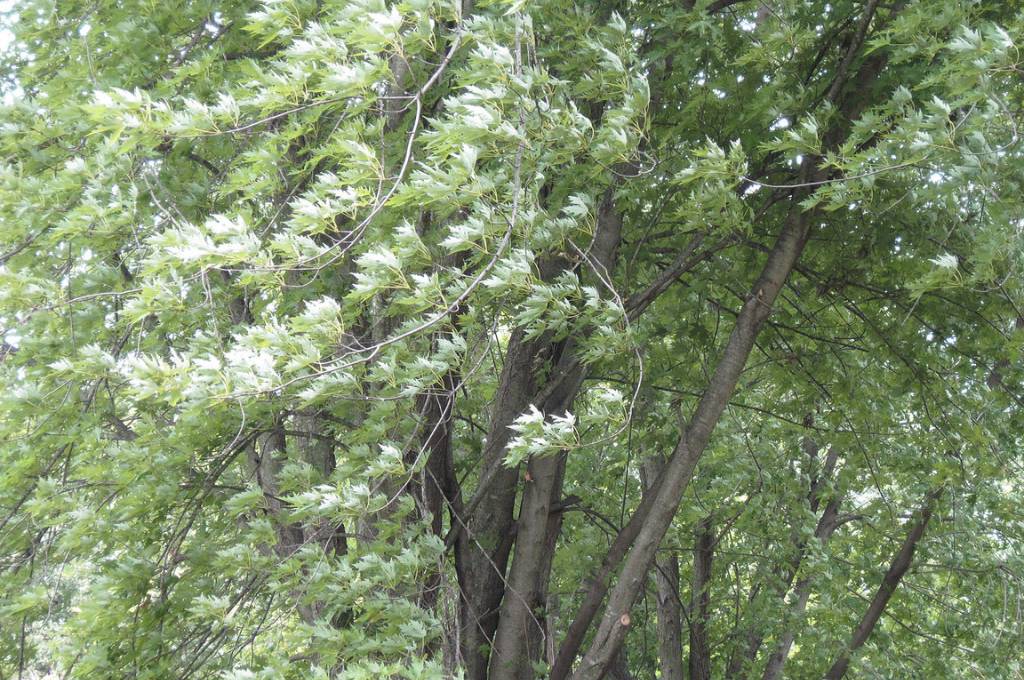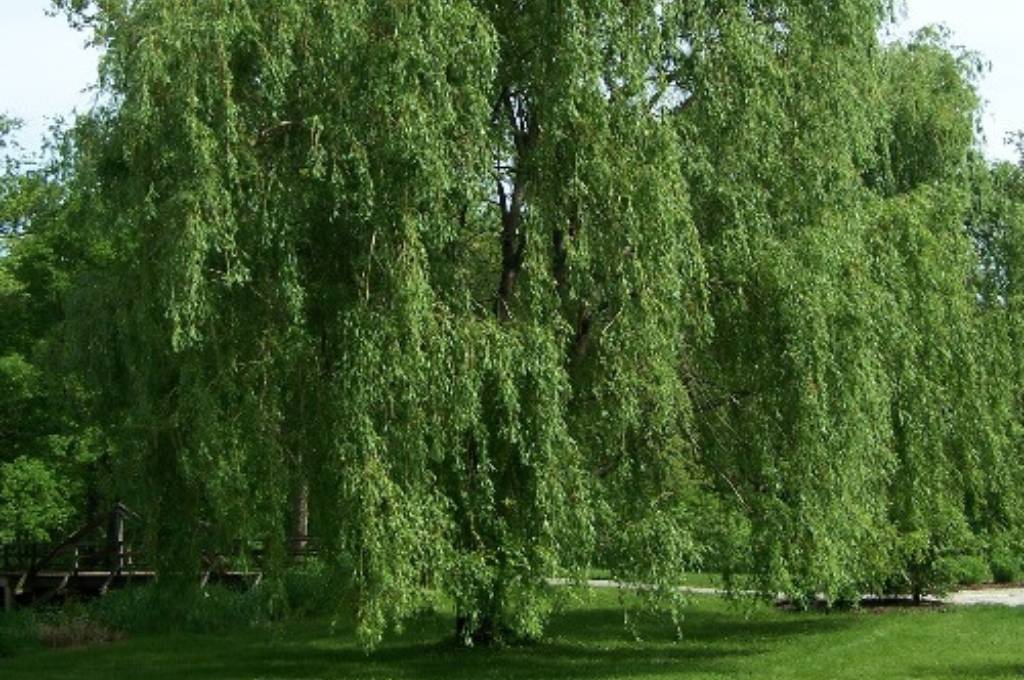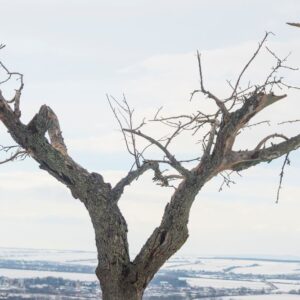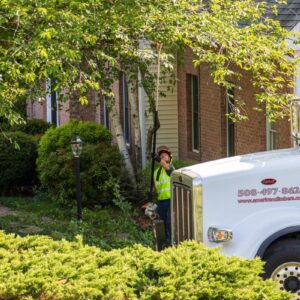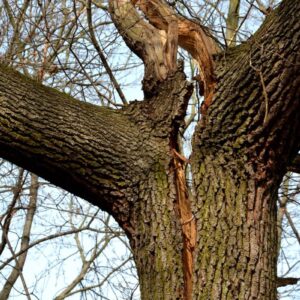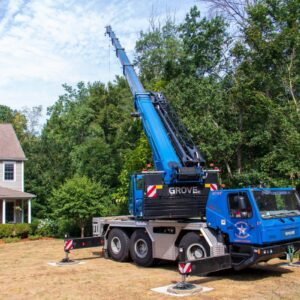With an average of 48 inches of rainfall annually, over 51 inches of snow, and winds up to 80 miles per hour, Massachusetts trees take a wicked beating year-round, particularly when we’re hit with one of our nor’easters. While many trees can withstand severe weather events, particularly if they’ve been properly pruned, some species are more prone to damage than others. So, which trees in Massachusetts are most likely to break or fall in high winds or heavy snowfalls?
Massachusetts Trees Most Likely to Fail in Storms
Any tree can be at risk of failure in extreme weather, but some tree species commonly grown in Massachusetts are more at risk than others. If you have any of these trees on your property, you can minimize the risk by ensuring that they’re well maintained. Or, if they’re growing close to your house, you might consider having them professionally removed. And, if you’re thinking of planting a new tree, you’ll probably want to avoid the five tree species below!
The five trees most prone to storm damage are:
- White pine (Pinus strobus)
- Bradford pear (Pyrus calleryana)
- Silver maple (Acer saccharinum)
- Poplar (30+ species of the Populus genus)
- Willow (Salix alba)
Eastern White Pine
The Eastern White Pine (Pinus strobus) is a classic Massachusetts tree. Native to our state, it grows straight and tall, rapidly reaching heights of up to 150 feet. It’s also long-lived, living 200 years or more in favorable conditions.
With strong roots reaching 3 to 4 feet underground, the white pine is unlikely to topple in a storm. However, it has notoriously brittle branches that are easily broken in high winds and heavy snowfall. Even just climbing a pine tree can bring branches raining down! These branches can fall and create a hazard on your property, potentially denting cars, breaking windows, tearing off gutters, or worse.
Bradford Pear
We last discussed the Bradford pear in our What to Do After a Winter Storm article. A non-native deciduous tree, the Bradford pear can grow up to 60 feet tall, with its distinctively stinky flowers blooming in April-May.
While some areas of the country banning the planting of the Bradford pear tree, others in Massachusetts are actively removing the tree, a plan that isn’t without controversy. Why such disdain for the tree?
In addition to being susceptible to winter weather, it’s also one of our trees most likely to fall in the wind. The Bradford pear tree’s brittle branches often snap off when severe weather hits, causing problems for homeowners and publicly owned spaces alike.
This tree’s trunk is also prone to splitting due to its many branches growing upward, growing larger until they put too much downward stress on the trunk. Since Bradford pears are common street trees in many areas, a single storm can result in a lot of damage.
Silver Maple
Where to begin with this one? Though Massachusetts has its share of maple species, the silver maple is a particularly problematic tree in severe weather.
Reaching up to 85 feet tall, the tree grows fast, and as a result, its soft wood can’t stand up to strong winds or heavy snowfall. The silver maple is also a shallow-rooted tree, so in addition to losing branches, the tree is at risk of falling over onto your car, powerlines, house, or other structures.

Populus balsamifera, commonly called balsam poplar, is a common poplar in Massachusetts. Photo used courtesy of Steven Katovich, Bugwood.org.
Poplar
The poplar tree is extremely fragile. Climbing children can easily break poplar branches, so it’s no surprise it’s among the trees most likely to fail in wind gusts and heavy snow. This hardwood tree is generally short-lived, but its fast growth (up to 100 feet tall) makes it especially susceptible to severe weather as the tall tree’s limbs snap off easily. These limbs can easily damage property or injure children playing in the snow.
Willow
Beautiful and mournful looking, the characteristics of the willow that make it a desirable landscape tree also make is an easily damaged tree. Growing up to 50-70 feet tall, the golden willow is a native tree common tree in Massachusetts. Because of its narrow branch angles and long, pendulous branches, the willow tree splits easily in high winds or under a heavy load of snow or ice. The willow’s shallow root system also means that it’s prone to falling over in strong winds.
A Final Consideration: Dead Trees
Dead trees of any species can pose a significant hazard. As trees die, they begin to decay which not only makes them brittle and more likely to break in inclement weather, but it also weakens the root structure and increases their chances of falling over completely.
Any time of year, dead trees can pose a hazard and should be assessed by a professional.
What to Do If Severe Weather Damages Your Tree
When severe storms damage or completely topple your Massachusetts trees, don’t try to handle the situation yourself. Fallen, broken, and leaning trees can be extremely hazardous, especially when they have come into contact with power lines or other utilities.
Wind and snow-damaged trees are emergencies that should be taken care of immediately due to the damage they cause and the dangerous situations they create. That’s why we recommend hiring a skilled and reliable emergency tree removal service when these situations arise. A professional service will:
- Remove any trees, limbs, or branches that are posing a threat to surrounding structures (including electric or utility lines)
- Assess the health of the remaining trees
- Take steps to ensure the health of trees in the future (such as pruning to reduce the likelihood of pest infestation from a storm-related tree wound)
- Clean up storm debris so you don’t have branches left lying on the ground (a hazard in and of itself)
- Do the job much more quickly (and safely!) than you can
What You Can Do to Prevent Tree Damage from Extreme Weather
The best thing you can do to decrease the likelihood of tree damage from severe Massachusetts weather is to have your trees assessed for any structural defects or compromised branches prior to extreme weather events.
Additionally, you should have your trees pruned regularly. Regular pruning not only removes excess branches that could break and/or weigh down your tree, but professional pruning can also increase the structural integrity of your tree.
This improves its ability to withstand winds and heavy snowfall and can save you money in the long run.
Do you have one of these trees most likely to fall in the wind or heavy snow? Do you need an assessment to ensure your trees are properly pruned to better withstand extreme weather? Call American Climbers at 508-497-8628 or request an estimate online to schedule an evaluation!
Blog Topics
Recent Posts
What's Happening? Stay Informed!
Stay on top of local events, pest and disease updates, tree and landscape tips, and more. Delivered straight to your inbox each month.



